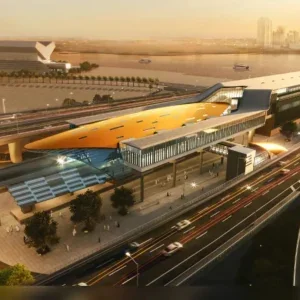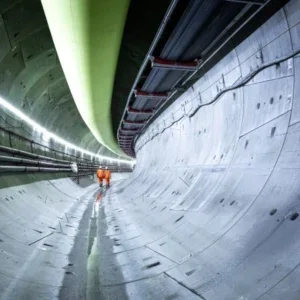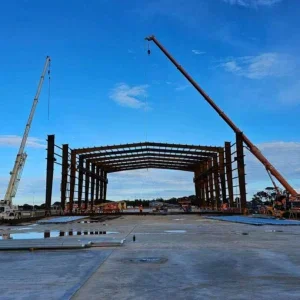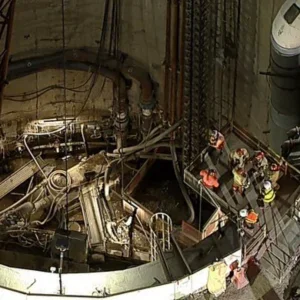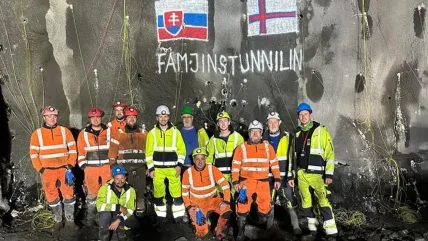
The event was celebrated on July 18, with almost everyone on the island attending.
The 1.2km road tunnel is situated on Suðuroy, the southernmost island, and was one of the most difficult projects Metrostav Norge has undertaken.
“The whole project was challenging and with a lot of surprises along the tunnel excavation,” Metrostav Norge project manager Anton Vido told T&TI.
The geology created complications from the outset and delayed the start of construction. The pit was due to be excavated by vertical drill and blast but the geology was so poor that excavators were used instead.
“We realised the geology in the tunnel, at least in the first meters, would be more difficult than we expected,” said Vido.
“We have a lot of experienced people in our team and even they were surprised how difficult the geology could be.
“The project was calculated to use standard Scandinavian method, drill and blast process. We went through several demanding situations in relation to the geology, having to adapt as it was changing nearly every round.”
This variable geology resulted in two partial collapses. During these events, Vido said the team had to adapt to new collapse conditions on a daily basis, and planning was reduced to no more than 24 hours ahead.
“Eight per cent of production was out of any contractual processes and in many situations we had to improvise. When you are in a collapse you can’t use standard process and this made everything even more difficult,” said Vido.
The geology led Metrostav to change its approach on nearly a third of the tunnel length.
“The tunnel was designed to be blasted in 5m rounds but, for safety, for 380m we chose to blast in 3m rounds,” said Vido.
Metrostav Norge is now completing the water and frost protection before J&K Petersen starts work on the road, electricity and drainage system for the tunnel.
When it opens in the fourth quarter of next year, the Fámjin Tunnel will shorten journey times between the villages of Ørðavík and Fámjin and improve road safety as vehicles will no longer have to drive over a wind-exposed mountain ridge.



